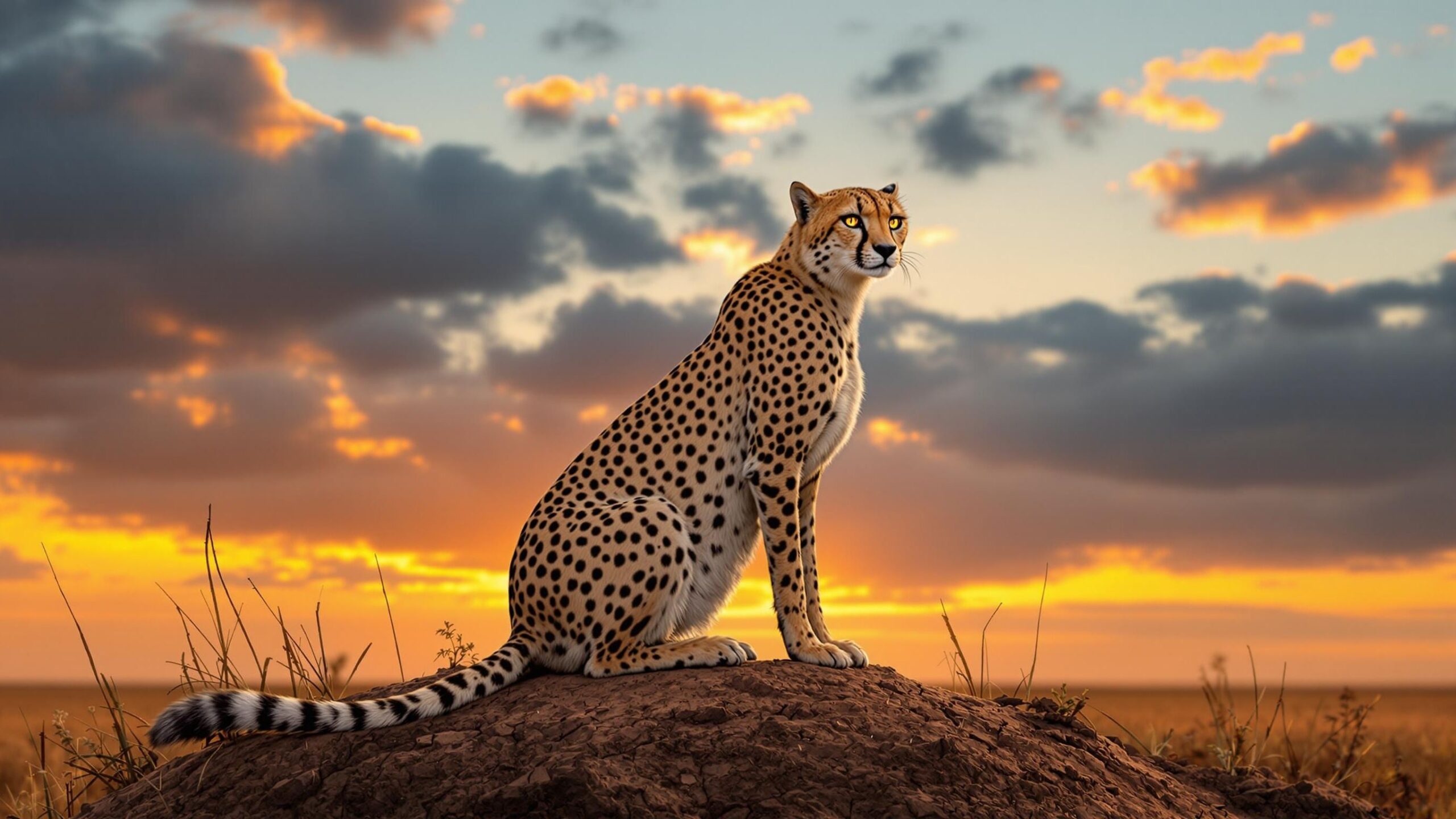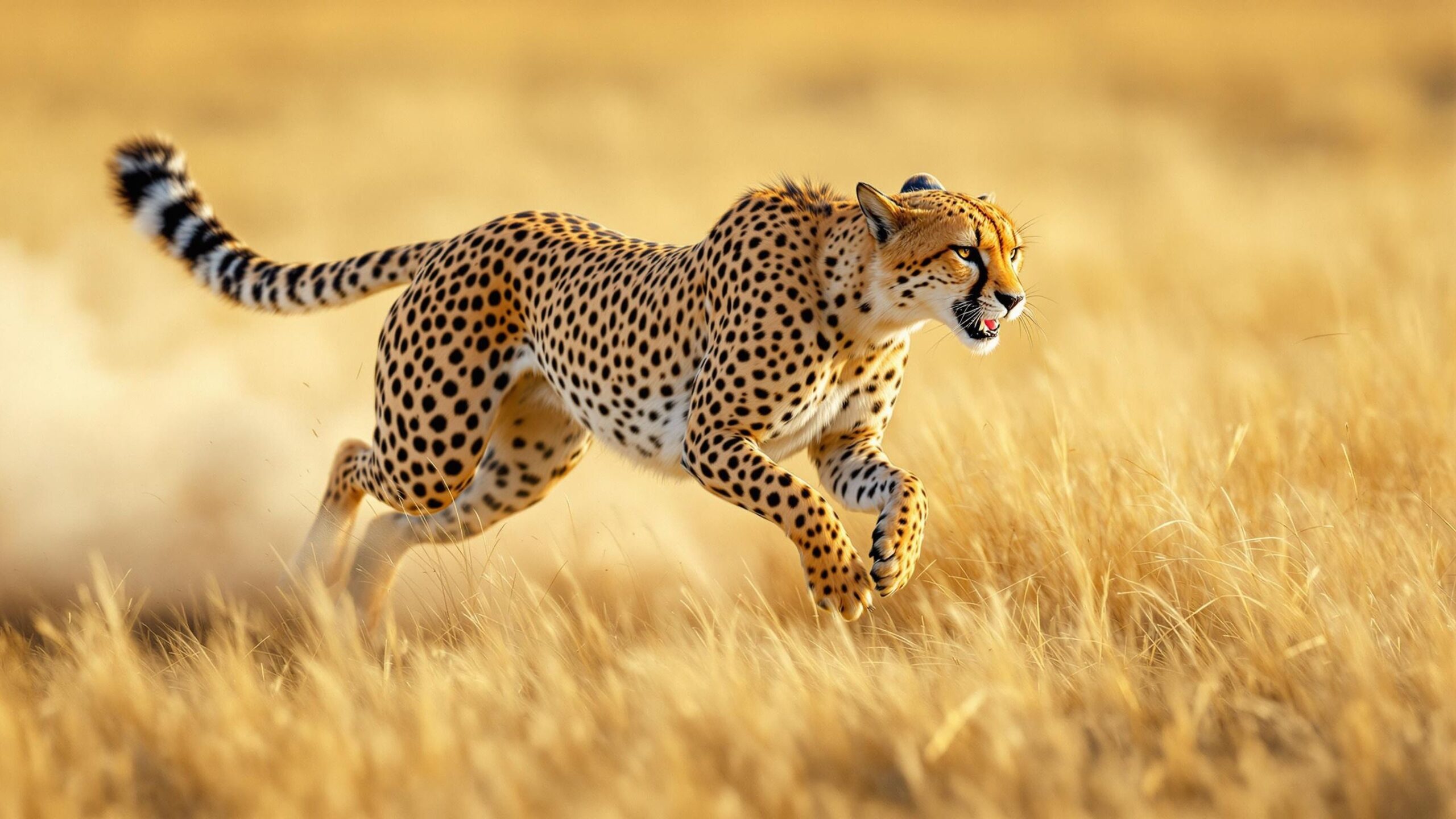Southeast African Cheetah: Nature’s Master Sprinter
In the golden grasslands and open savannas of southern Africa, there lives a predator whose grace and speed have captivated the imagination of humans for centuries. With its lithe frame, soulful amber eyes, and distinctive black “tear marks,” the Southeast African Cheetah (Acinonyx jubatus jubatus) is more than just the fastest land animal on Earth—it is a symbol of elegance, adaptability, and survival in a fast-changing world.
Known for its breathtaking acceleration and near-mythical agility, this subspecies of cheetah is the most numerous and widely distributed of its kind. But even as it dominates the open plains with its unmatched hunting prowess, the Southeast African Cheetah faces mounting pressures—from shrinking habitats to the complex dance of coexistence with human communities. This article explores the biology, behavior, ecology, and importance of the Southeast African Cheetah, inviting readers to better understand the heartbeat of the savanna and the remarkable feline that sprints across it.
A Subspecies Defined
The Southeast African Cheetah is one of five recognized subspecies of Acinonyx jubatus, and by far the most common. Found primarily in Namibia, Botswana, South Africa, Zimbabwe, and parts of Mozambique, this cheetah thrives in a variety of landscapes—from arid scrublands and savannas to open woodlands. Sometimes called the Southern African Cheetah or Namibian Cheetah, it represents a vital anchor for global cheetah populations, accounting for more than half of all remaining wild cheetahs today.
Sleek and built for speed, adult males typically weigh between 90 and 140 pounds, with females slightly lighter. Their bodies are long and slender, with small heads, deep chests, and narrow waists, all optimized for aerodynamic movement. Standing about 30 inches tall at the shoulder and stretching over four and a half feet in length—excluding their long tail—these cats are finely tuned for pursuit.
Unlike other big cats, cheetahs cannot roar. Instead, they chirp, purr, hiss, and growl, communicating through a suite of sounds and body language. These differences are not just cosmetic—they reflect the cheetah’s unique place in the feline family tree. In fact, cheetahs are the only member of their genus, Acinonyx, and their physiology diverged from other large cats millions of years ago.
Built for Speed
When people think of cheetahs, the first image that comes to mind is almost always speed—and for good reason. The Southeast African Cheetah is the fastest land mammal on Earth, capable of reaching speeds of 60 to 70 miles per hour in short bursts. Even more remarkable is its acceleration: it can go from 0 to 60 mph in just three seconds, rivaling a sports car.
This astonishing speed is made possible by a suite of adaptations: enlarged adrenal glands, a supercharged respiratory system, an elongated spine that works like a spring, and semi-retractable claws that grip the ground like cleats. Its tail acts as a rudder, helping to stabilize sharp turns at full throttle.
But speed comes at a cost. Cheetahs can only maintain these bursts for 20 to 30 seconds before overheating or exhausting their muscles. This means every hunt is a high-risk gamble. If a chase fails, the cheetah must rest and recover, often losing valuable time and energy. And even when successful, the cheetah may have to defend its kill from stronger predators like lions, leopards, or hyenas.
Life on the Open Plains
Southeast African Cheetahs are best suited to environments where visibility is high and the terrain is open—ideal conditions for spotting and sprinting after prey. Their core range includes the Kalahari Desert, the Okavango Delta, and various national parks and private reserves across southern Africa.
They typically hunt during the cooler hours of the morning and late afternoon, using their excellent vision to scan the horizon for movement. Once they’ve selected a target—usually a small to medium-sized ungulate such as impala, springbok, or steenbok—they initiate a calculated stalk. The chase, when it comes, is explosive, dramatic, and over in seconds. Unlike lions, cheetahs are not ambush predators. They rely on a combination of stealth and speed, often closing to within 100 feet before launching the pursuit. Their kills are typically made with a tripping swipe to the legs followed by a suffocating bite to the throat. The entire event is fast, precise, and deadly efficient.

Social Structure and Behavior
Cheetah social dynamics are fascinating and somewhat different from most big cats. While females are solitary and roam wide territories with their cubs, males may form coalitions, often composed of brothers from the same litter. These coalitions work together to defend a shared range and improve hunting success, offering a rare example of cooperative behavior in felines.
Territories vary greatly depending on prey density, landscape features, and competition from other predators. Male coalitions may patrol overlapping ranges of 20 to 30 square miles, while a solitary female may cover more than 100 square miles, especially in regions with sparse prey. Communication is largely non-verbal, relying on scent marking, posturing, and vocalizations. Cheetahs make use of termite mounds, trees, or rocks as lookout points and scent-posts, leaving messages for other cheetahs to decipher—claims of territory, reproductive status, or mere presence.
Mating and Raising Cubs
The reproductive cycle of the Southeast African Cheetah is geared toward ensuring survival in a competitive environment. Cheetahs do not have a defined breeding season, though in the wild, births tend to cluster around times when prey is more abundant.
After mating, the female separates from the male and raises the cubs alone. Gestation lasts about 90 to 95 days, with litters typically numbering three to five cubs, though as many as eight are possible. Cubs are born blind and helpless, with a mantle of long gray hair along their backs—thought to mimic the appearance of honey badgers and deter predators. Raising cubs is perilous. Mortality rates in the wild are high, with predation by lions, hyenas, jackals, and eagles accounting for many losses. Only a small percentage of cubs reach adulthood, but those that do will remain with their mother for 18 to 24 months, learning the essential skills of hunting and survival.
Conservation and Human Pressures
Though the Southeast African Cheetah is the most populous cheetah subspecies, its future is far from secure. It is currently listed as Vulnerable on the IUCN Red List, with an estimated 3,500 to 4,000 individuals remaining in the wild. The main threats to its survival include habitat loss, human-wildlife conflict, and genetic bottlenecks. Expanding agriculture and development have fragmented much of the cheetah’s traditional range, pushing them into increasingly isolated areas. These fragmented habitats not only limit prey availability but also reduce genetic diversity, which is already low due to historical population crashes. Cheetahs are particularly vulnerable to conflict with farmers, especially when livestock is attacked. Unlike lions or leopards, cheetahs are less intimidating and more likely to be killed in retaliation. However, much of this conflict stems from misunderstanding—cheetahs prefer wild prey and often only turn to livestock when other options are scarce.
Fortunately, several innovative conservation strategies are helping turn the tide. Namibia, for instance, has pioneered cheetah-friendly farming practices that include the use of livestock guardian dogs and improved herding techniques. These programs have reduced losses for farmers and minimized the killing of cheetahs. In addition, large-scale conservation initiatives such as the Cheetah Conservation Fund, African Parks, and local NGOs work to monitor populations, secure corridors, and engage communities in cheetah stewardship. Captive breeding efforts also exist, but due to the species’ low reproductive success in captivity, the focus remains on wild population management.
A Predator With a Purpose
Beyond its charisma and speed, the Southeast African Cheetah plays an important ecological role. As a mid-sized predator, it helps regulate herbivore populations, particularly those of fleet-footed species like gazelles and antelopes. By preying primarily on the young, weak, or old, cheetahs contribute to the health of prey species and the balance of ecosystems.
Unlike lions, which are apex predators, cheetahs are more vulnerable and sensitive to ecological disruptions. This sensitivity makes them effective indicators of ecosystem health. When cheetahs are thriving, it usually means the landscape is still relatively intact and functioning. Moreover, the cheetah’s appeal as a flagship species has helped attract attention and funding for broader conservation efforts that benefit entire habitats and a variety of other species, from ground hornbills to bat-eared foxes.
Living With Cheetahs: The Human Element
Cheetahs do not view humans as prey and are generally shy around people. In areas where they come into contact with humans, cheetahs tend to avoid direct interaction. However, their overlap with livestock and expanding human settlements means that successful conservation must take human perspectives into account.
In many parts of southern Africa, attitudes toward cheetahs are beginning to shift. Through community-based conservation, ecotourism, and education, more people are learning that living with cheetahs can bring economic and cultural benefits. Photographic safaris, cheetah tracking experiences, and research tourism are just a few examples of how the presence of cheetahs can generate income for local communities. Conservation success stories in countries like Botswana and Namibia show that with the right incentives, coexistence is not only possible—it can be profitable.

The Spirit of the Savanna
To see a Southeast African Cheetah in the wild is to witness nature in motion. Whether it’s crouched in golden grass, locked onto prey, or sprinting with sublime power, the cheetah embodies a kind of raw, untamed beauty that few creatures can match. It is this blend of fragility and fearlessness that makes the cheetah so compelling. It is an animal forever on the edge—evolutionarily specialized, biologically unique, and ecologically invaluable. As conservationists work to secure its future, the cheetah reminds us that speed is not the only measure of survival. Adaptation, coexistence, and resilience matter just as much.
Conclusion: A Race Worth Running
The story of the Southeast African Cheetah is a tale of contrasts. It is the fastest, yet one of the most vulnerable. It is widespread, yet increasingly fragmented. It is independent, yet tied irrevocably to the fate of human choices and landscapes. By protecting this cheetah, we are not just preserving a species—we are affirming our commitment to wildness, to biodiversity, and to a world in which there is still room for the chase, the thrill, and the freedom of the open plains. In a world that often seems to move too fast, the cheetah reminds us of the beauty in movement, the precision of purpose, and the importance of protecting the natural wonders that inspire us.

